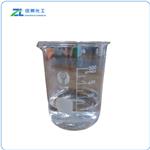- Polyethyleneimine
-

- $200.00 / 1kg
-
2024-12-20
- CAS:9002-98-6
- Min. Order: 1kg
- Purity: 99%
- Supply Ability: 20ton
- Poly(ethylenimine)
-

- $50.00 / 1kg
-
2024-12-20
- CAS:9002-98-6
- Min. Order: 1kg
- Purity: 99
- Supply Ability: 5000
- Polymin P
-

- $60.00 / 1kg
-
2024-12-20
- CAS:9002-98-6
- Min. Order: 1kg
- Purity: 99
- Supply Ability: 5000
|
| | POLYETHYLENEIMINE Chemical Properties |
| Melting point | 59-60°C | | Boiling point | 250 °C(lit.) | | density | 1.030 g/mL at 25 °C | | vapor pressure | 9 mmHg ( 20 °C) | | refractive index | n20/D 1.5290 | | Fp | >230 °F | | storage temp. | 2-8°C | | solubility | DMSO (Sparingly) | | form | Liquid | | color | Pale yellow | | Specific Gravity | 1.045 (20/4℃) | | PH | pH(50g/l, 25℃) : 10~12 | | Water Solubility | Soluble in water. | | Sensitive | Hygroscopic | | InChI | InChI=1S/C2H5N/c1-2-3-1/h3H,1-2H2 | | InChIKey | NOWKCMXCCJGMRR-UHFFFAOYSA-N | | SMILES | C1NC1 | | LogP | -0.969 (est) | | EPA Substance Registry System | Aziridine, homopolymer (9002-98-6) |
| Provider | Language |
|
ALFA
| English |
| | POLYETHYLENEIMINE Usage And Synthesis |
| Description | Polyethyleneimine (PEI), an organic polyamine polymer, is one of the
most prominent examples of cationic polymers capable of gene
transfection in vitro and in vivo into various cell lines and
tissues. PEI was also applied in different fields from gene therapy
and several studies have emphasized the importance of this polymer in
medicinal chemistry. | | Chemical Properties | Clear viscous liquid | | Uses | Branched polyethyleneimine (PEI) is widely used in many applications due to its polycationic character. Unlike its linear equivalent, branched PEI contains primary, secondary, and tertiary amines. Primarily utilized in industrial applications, high molecular weight PEI has been used as a flocculating agent, textile coating, adhesion promoter, enzyme carrier, and as a material for CO2 capture. | | Uses | Polyethyleneimine acts as a protein precipitant used to purify proteins. It is used as a chelating agent and as a scavenger for aldehydes and oxides. It is also used in detergents, paper industry, dyes, printing inks and in water treatment. | | Uses | Polyethyleneimine is used as a polyelectrolyte multilayer on charged surfaces to provide a biocompatible coating on surfaces.1Detergents, adhesives, water treatment, printing inks, dyes, cosmetics, and paper industry, adhesion promoter, lamination primer, fixative agent, flocculant, cationic dispersant, stability enhancer, surface activator, chelating agent, scavenger for aldehydes and oxides. | | Application | Polyethyleneimine(PEI) can be used as a non-viral synthetic polymer carrier for in vivo delivery of therapeutic nucleic acids. The interaction between the negatively charged nucleic acid and the positively charged polymer backbone leads to the formation of nanoscale complexes. This neutralising complex protects the enclosed nucleic acid from enzymes and maintains its stability until cellular uptake occurs. For example, human serum albumin-coupled PEI shows good pDNA transfection and low toxicity.
PEI can be used to functionalize single-walled nanotubes (SWNTs) to improve their solubility and biocompatibility while maintaining the structural integrity of the original SWNT. Covalently functionalized SWNTs can be used for CO2 uptake and gene delivery.
Branched PEI can also be used to modify the surface properties of adsorbents. PEI-modified aqueous zirconia/PAN nanofibres have a high fluoride adsorption capacity and a wide working pH range, and can therefore be used for groundwater defluoridation.
| | Production Methods | Polyethylenimine is produced by the homopolymerization of ethylenimine. The reaction is catalyzed by acids, Lewisacids, or haloalkanes. The polymerization is usually carried out at 90 – 110 ℃ in water or in a variety of organic solvents. The average molecular mass of the polyethylenimine prepared as described above is 10 000 – 20 000. Higher molecular mass polymers are prepared by addition of a difunctional alkylating agent, such as chloromethyloxirane or 1,2-dichloroethane. Polyethylenimines with a higher average molecular mass can also be provided by ultrafiltration of polymers with a broad mass distribution. Likewise, polymers of lower molecular mass can be obtained by inclusion of a low molecular mass amine, such as 1,2- ethanediamine, during polymerization. By using these techniques a range of molecular masses from 300 to 10 6 can be obtained. Cross-linking during the polymerization of ethylenimine in organic solvents leads to solid polyethylenimines. Furthermore the polymerization process can be conducted on the surface of organic or inorganic materials, thus fixing the polyethylenimines to a support.
| | Definition | ChEBI: Aziridine is a saturated organic heteromonocyclic parent, a member of aziridines and an azacycloalkane. It has a role as an alkylating agent. It is a conjugate base of an aziridinium. | | General Description | All polyethylene imine polymers are hydrophilic and may contain approx. 30% hydrated water. | | Trade name | Lupasol, Polymin, Catiofast, Lugalvan (BASF), Epomin (Nippon Shokubai).
| | Biological Activity | Polyethylenimine is nondegradable and the molecular weight of PEI affects the cytotoxicity and gene transfer activity. Polyethylenimine acts as a low toxicity and efficient gene vector. | | Structure and conformation | Polyethyleneimine(PEI) exists as both a branched and linear structure. Branched PEI (bPEI) is synthesized via acid-catalyzed polymerization of aziridine, whereas the linear structure (lPEI) is synthesized via ring opening polymerization of 2-ethyl-2-oxazoline followed by hydrolysis. |
| | POLYETHYLENEIMINE Preparation Products And Raw materials |
|